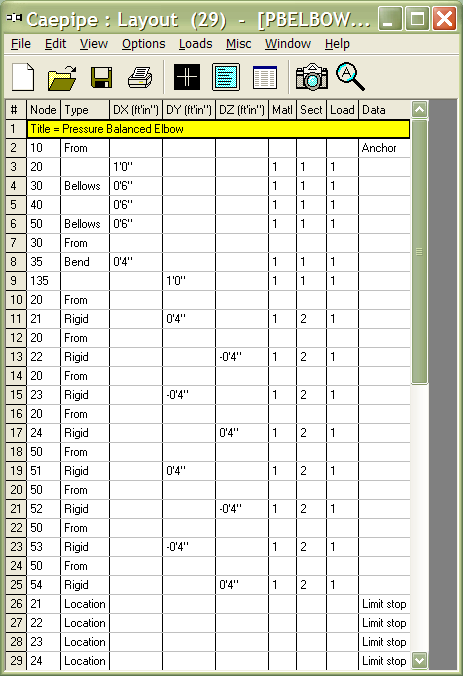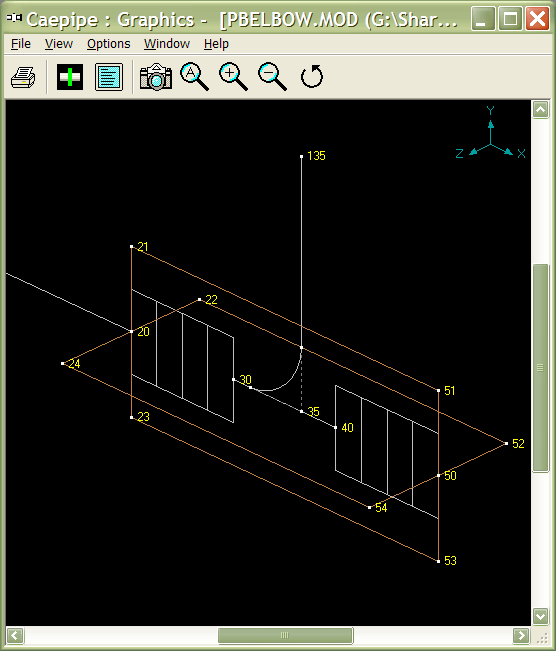Software Solutions
- CAEPIPE
- CAEPIPE 3D+
- checkSTRESS
- dataTRANSLATORS
- HOTclash
- PEXit
- Pricing Request
- Download Free Evaluation
- Download CAEPIPE 3D+
- Download Free Review Module
- Customer Support
Engineering Services
- Design and Engineering
- INFOplant™ System
- Engineering Management
- List of Projects
- Project Gallery
- Project Videos
Learn More
Company Information
Tips January - March 2008
Modeling a Pressure Balanced Elbow
A pressure balanced elbow absorbs axial and lateral movements at a change in direction while it restrains the axial pressure thrust on nearby (rotating) equipment.
The joint comprises of two bellows, one on either side of the elbow. Flow bellows, as the name suggests, is on the flow side, while the balancing bellows extends from the elbow out, subject to the same line pressure, secured to the flow bellows by tierods. The balancing bellows expands by the same amount that the flow bellows compresses (because of the tierod arrangement), with no volume change thus keeping the pressure forces in balance; hence the name pressure balanced elbow.
To allow a larger lateral movement, one should use a pressure balanced universal expansion joint. The difference here is that there are two bellows on the flow side instead of one, with still one balancing bellows.
Modeling either of these joints is simple once you become aware of this information.
Notice the two images shown here - model graphics and the layout screen.


A few points to note:
1. The Bend node (35) is NOT on the pipe element 30-40. Notice the rows in the layout window. The bellows modeling is from nodes 20-30-40-50. Bend modeling starts on row 7 "From" 30-35-135.
2. Depending on how precise you want to be in your modeling of the tierods, you have three choices:
a. Simply input one tierod from 20-50. Input the combined stiffnesses of all the tierods around the bellows, or
b. As shown in the model graphics, use massless rigid elements to model the offsets (such as from 20-21, 20-24 etc.) on both sides of the joint, and tie corresponding nodes with Limit stops. Note that a limit stop takes only one stiffness input for both in tension and in compression, or
c. Replace limit stops in item b. with tierods. A tierod allows stiffness inputs for both in tension and in compresssion, allowing for more flexibility in input. Note that CAEPIPE does not require Section and Material input for tierods.
Download the sample CAEPIPE model here (pbelbow-1.mod, v5.21 and later).

